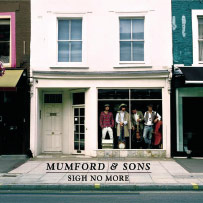Bobbyisms: Banjo making a comeback

I write about random things a lot. I write a lot about random things. In music today, there is hardly an instrument as misunderstood and under-appreciated as the banjo. Let that sink in.
Rarely heard outside of country music, and unfortunately irrevocably tarnished by the context of the film Deliverance, the banjo is a beautiful instrument; while it requires a high level of skill to play and an even higher level of vision to compose lasting music with, it is making a return to the public ear thanks to a new venue in indie music.
Its name is derived from a list of terms hinting at its history, deeply rooted in slavery in the southern United States in the 18th and 19th centuries. Slaves fashioned the instrument from gourds to be similar to those they played back in Africa, akin both to stringed instruments like guitars and to drums. Though those early models differed considerably from modern banjos, the design is the same.
Though the banjo became a very popular instrument all over the world in the 19th and 20th century, the instrument fell victim to the Big Bang of Popular Music — the explosion of popular music beginning with innovations in recording and radio broadcasting around the turn of the 20th century and continuing through pop phenomena like the birth of rock and roll in the 1950s.
Retreating to the background, the banjo has sat and waited for its chance to grace popular music again, waited for the opportunity to be more than just a part of bluegrass music ... and now, thanks to indie acts, it's getting that chance.
British folk group Mumford & Sons released their debut album Sigh No More a year ago in their native England, and here in North America in February. After a pair of performances on late-night television and exposure on TV series like Grey's Anatomy and Lone Star, the band has gained some notoriety amongst music lovers.
Their sound blends together acoustic rock music with a certain maritime folk flavour, producing a very high-energy, compelling record made all the more interesting for its many literary references.
Frontman Marcus Mumford leads the band (multi-instrumentalists Ben Lovett, “Country” Winston Marshall and Ted Dwane) in powerful vocals, lending to the overall lushness and brilliance of a record you simply have to hear to believe.
Check out the tracks Little Lion Man, The Cave and I Gave You All and learn more about Mumford & Sons on their website, mumfordandsons. com.
Another brilliant example of the banjo used well is found in Freelance Whales, a band from Queens, New York. Having finetuned their material by busking (including subway platforms in New York City), they self-released their debut record Weathervanes last year, gaining notoriety through a series of supporting tours around Canada and the United States.
Also multi-instrumentalists, the band — comprised of Judah Dadone, Doris Cellar, Chuck Criss, Jacob Hyman and Kevin Read — met through Craigslist and mutual friends in 2008 and have grown leaps and bounds in 2010, recently opening for Tokyo Police Club with Arkells.
Their record can only be described as indie-lightful; though they conjure a lot of comparison to acts like Ben Gibbard's Postal Service and sound similar in tone to City And Colour, employing at times a guitar, banjo, synthesizer, bass, harmonium, glockenspiel, drums and mandolin — Weathervanes is another album that simply must be heard.
Check out the tracks Generator First Floor, Hannah and Broken Horse and follow the band at freelancewhales.com or on Twitter @freelancewhales.
Check out entries in the Music Recommendation thread in our FSU social network to see videos and streams for both bands, and don't forget about all the latest music news, views, and downloads by following @FSU_Bobbyisms on Twitter. I'm out of words.













